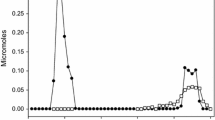Abstract
The chromium-binding oligopeptide chromodulin (also known as low-molecular-weight chromium-binding substance) has been shown to activate the tyrosine kinase activity of the insulin receptor in response to insulin and has been proposed to be part of a novel autoamplification mechanism for insulin signaling. The model requires that Cr3+ be moved from the blood to insulin-sensitive tissues in response to insulin and subsequently be lost in the urine as chromodulin; however, the model has not been tested by in vivo studies. In vivo studies with rats have shown that the iron transport protein transferrin serves as the major chromic ion transport agent and that this transport is stimulated by insulin. The ion is transported to a variety of tissues, while liver and kidneys are the major target. In hepatocytes, chromodulin occurs in appreciable levels in the cytosol and in the nucleus. Apochromodulin levels appear to be maintained under homeostatic control, although the only detectable form of urinary chromium is probably chromodulin. Increases in urinary chromium loss in response to insulin are reflected by increases in chromodulin, establishing a direct link between carbohydrate metabolism and the oligopeptide.
Similar content being viewed by others
Author information
Authors and Affiliations
Corresponding author
Rights and permissions
About this article
Cite this article
Clodfelder, B.J., Emamaullee, J., Hepburn, D.D. et al. The trail of chromium(III) in vivo from the blood to the urine: the roles of transferrin and chromodulin. JBIC 6, 608–617 (2001). https://doi.org/10.1007/s007750100238
Received:
Accepted:
Published:
Issue Date:
DOI: https://doi.org/10.1007/s007750100238




